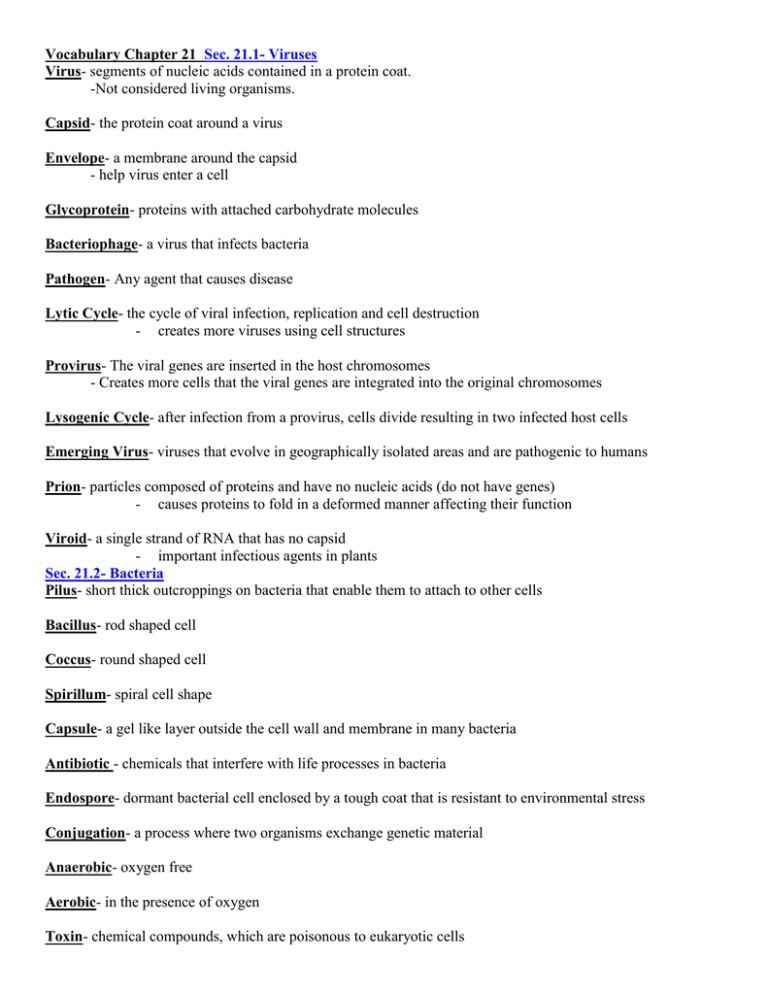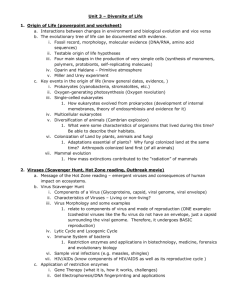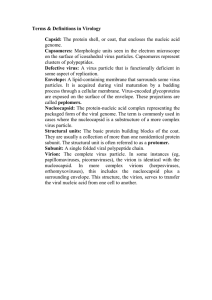Virus & Bacteria Vocabulary: Definitions & Key Terms
advertisement

Vocabulary Chapter 21 Sec. 21.1- Viruses Virus- segments of nucleic acids contained in a protein coat. -Not considered living organisms. Capsid- the protein coat around a virus Envelope- a membrane around the capsid - help virus enter a cell Glycoprotein- proteins with attached carbohydrate molecules Bacteriophage- a virus that infects bacteria Pathogen- Any agent that causes disease Lytic Cycle- the cycle of viral infection, replication and cell destruction - creates more viruses using cell structures Provirus- The viral genes are inserted in the host chromosomes - Creates more cells that the viral genes are integrated into the original chromosomes Lysogenic Cycle- after infection from a provirus, cells divide resulting in two infected host cells Emerging Virus- viruses that evolve in geographically isolated areas and are pathogenic to humans Prion- particles composed of proteins and have no nucleic acids (do not have genes) - causes proteins to fold in a deformed manner affecting their function Viroid- a single strand of RNA that has no capsid - important infectious agents in plants Sec. 21.2- Bacteria Pilus- short thick outcroppings on bacteria that enable them to attach to other cells Bacillus- rod shaped cell Coccus- round shaped cell Spirillum- spiral cell shape Capsule- a gel like layer outside the cell wall and membrane in many bacteria Antibiotic - chemicals that interfere with life processes in bacteria Endospore- dormant bacterial cell enclosed by a tough coat that is resistant to environmental stress Conjugation- a process where two organisms exchange genetic material Anaerobic- oxygen free Aerobic- in the presence of oxygen Toxin- chemical compounds, which are poisonous to eukaryotic cells











